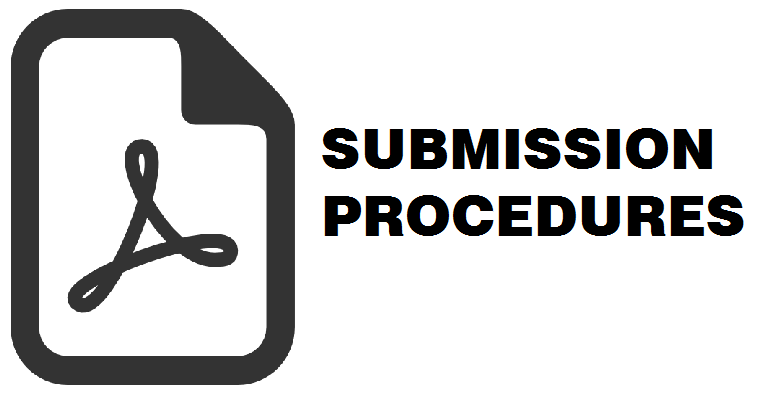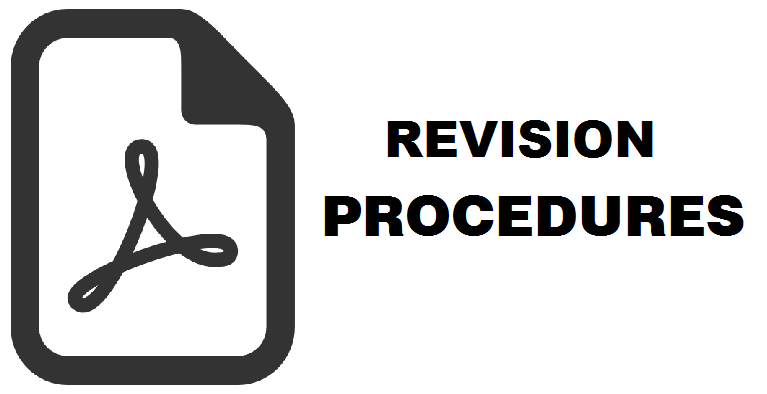Assessment of Flood Risk Induced by Land Subsidence Using Machine Learning
Bambang Darmo Yuwono(1*), L. M. Sabri(2), A. P. Wijaya(3), M. Awaluddin(4)
(1) Department of Geodetic Engineering, Faculty of Engineering, Diponegoro University, Indonesia
(2) Department of Geodetic Engineering, Faculty of Engineering, Diponegoro University, Indonesia
(3) Department of Geodetic Engineering, Faculty of Engineering, Diponegoro University, Indonesia
(4) Department of Geodetic Engineering, Faculty of Engineering, Diponegoro University, Indonesia
(*) Corresponding Author
Abstract
Semarang City is facing significant environmental challenges, with land subsidence being a critical issue that intensifies flood inundation and worsening flood damage. As urban areas expand and climate change impacts become more pronounced, understanding and mitigating flood risks are crucial for sustainable urban development and disaster management. Therefore, this study aimed to assess flood risk induced by land subsidence using machine learning to improve flood management. Five different machine learning models (MLMs) were used to assess flood risk, which included Decision Tree (DT), K-Nearest Neighbor (KNN), Logistic Regression (LR), Support Vector Machine (SVM), and Random Forest (RF). Additionally, fourteen different indices and 2884 sample points were used to train and test the models, with hyperparameter optimization ensuring fairness in comparisons. To address uncertainty in the sample dataset, flood hot spots were used to validate the rationality of flood risk zoning maps. The study investigated driving factors of different flood risk levels, focusing on flood areas to determine flood risk mechanisms in the highest-risk areas. The results showed that KNN performed the best and provided the most reasonable flood risk value among the models. Meanwhile, curve number (CN), distance to the river (DTRiver), and Building Density (BD) were identified as the top three significant factors of flood risk, ranked using the average score decrease in KNN model. Finally, this study expanded the application of machine learning for flood risk assessment and also deepened understanding of the potential mechanisms of flood risk, and provided perceptions about better flood risk management.
Keywords
Full Text:
PDFReferences
Abidin, H. Z., Andreas, H., Gumilar, I., & Brinkman, J. J. (2015). Study on the risk and impacts of land subsidence in Jakarta. Proceedings of the International Association of Hydrological Sciences, 372, 115–120. https://doi.org/10.5194/piahs-372-115-2015
Arabameri, A., Pradhan, B., & Rezaei, K. (2019). Gully erosion zonation mapping using integrated geographically weighted regression with certainty factor and random forest models in GIS. Journal of Environmental Management, 232, 928–942. https://doi.org/10.1016/j.jenvman.2018.11.110
Breiman, L. (2001). Statistical Modeling: The Two Cultures (with comments and a rejoinder by the author). Statistical Science, 16(3), 199–231. https://doi.org/10.1214/ss/1009213726
Chen, J., Huang, G., & Chen, W. (2021). Towards better flood risk management: Assessing flood risk and investigating the potential mechanism based on machine learning models. Journal of Environmental Management, 293, 112810. https://doi.org/10.1016/j.jenvman.2021.112810
Costache, R.-D., Arabameri, A., Costache, I., Crăciun, A., Islam, A. R. Md. T., Abba, S. I., Sahana, M., Pandey, M., Tin, T. T., & Thai Binh, P. (2022). Flood Hazard Potential Evaluation Using Decision Tree State-of-The-Art Models. SSRN Electronic Journal. https://doi.org/10.2139/ssrn.4028267
Deroliya, P., Ghosh, M., Mohanty, M. P., Ghosh, S., Rao, K. H. V. D., & Karmakar, S. (2022). A novel flood risk mapping approach with machine learning considering geomorphic and socio-economic vulnerability dimensions. Science of The Total Environment, 851, 158002. https://doi.org/10.1016/j.scitotenv.2022.158002
Ebrahimy, H., Feizizadeh, B., Salmani, S., Azadi, H., 2020. A comparative study of land subsidence susceptibility mapping of Tasuj plane, Iran, using boosted regression tree, random forest and classification and regression tree methods. Environ. Earth Sci. 79, 223. https://doi.org/10.1007/s12665-020-08953-0
EO4SD. (2017). Earth Observation for Sustainable Development.
Gauhar, N., Das, S., & Moury, K. S. (2021). Prediction of Flood in Bangladesh using k-Nearest Neighbors Algorithm. 2021 2nd International Conference on Robotics, Electrical and Signal Processing Techniques (ICREST), 357–361. https://doi.org/10.1109/ICREST51555.2021.9331199
Gharechaee, H., Nazari Samani, A., Sigaroodi, S.K., A. Hubbart, J., Moehammad Moein Sadeghi, S., 2023. Land Subsidence Susceptibility Mapping Using Interferometric Synthetic Aperture Radar (InSAR) and Machine Learning Models in a Semiarid Region of Iran. Land 12, 843–843. https://doi.org/10.3390/land12040843
Ghosh, A., & Dey, P. (2021). Flood Severity assessment of the coastal tract situated between Muriganga and Saptamukhi estuaries of Sundarban delta of India using Frequency Ratio (FR), Fuzzy Logic (FL), Logistic Regression (LR) and Random Forest (RF) models. Regional Studies in Marine Science, 42, 101624. https://doi.org/10.1016/j.rsma.2021.101624
Ha-Mim, N. M., Rahman, Md. A., Hossain, Md. Z., Fariha, J. N., & Rahaman, K. R. (2022). Employing multi-criteria decision analysis and geospatial techniques to assess flood risks: A study of Barguna district in Bangladesh. International Journal of Disaster Risk Reduction, 77, 103081. https://doi.org/10.1016/j.ijdrr.2022.103081
Horvitz, E., & Mulligan, D. (2015). Data, privacy, and the greater good. Science, 349(6245), 253–255. https://doi.org/10.1126/science.aac4520
Kuehn, F., Albiol, D., Cooksley, G., Duro, J., Granda, J., Haas, S., Hoffmann-Rothe, A., & Murdohardono, D. (2010). Detection of land subsidence in Semarang, Indonesia, using stable points network (SPN) technique. Environmental Earth Sciences, 60(5), 909–921. https://doi.org/10.1007/s12665-009-0227-x.
Le, L., Xie, Y., & Raghavan, V. V. (2021). KNN Loss and Deep KNN. Fundamenta Informaticae, 182(2), 95–110. https://doi.org/10.3233/FI-2021-2068.
Li, G., Zhao, H., Liu, C., Wang, J., & Yang, F. (2022). City Flood Disaster Scenario Simulation Based on 1D–2D Coupled Rain–Flood Model. Water, 14(21), 3548. https://doi.org/10.3390/w14213548
Li, S., Wang, Z., Lai, C., & Lin, G. (2020). Quantitative assessment of the relative impacts of climate change and human activity on flood susceptibility based on a cloud model. Journal of Hydrology, 588, 125051. https://doi.org/10.1016/j.jhydrol.2020.125051
Miladan, N., Ariani, F., Pertiwi, S. N. I., Setiawan, R., & Handayani, K. N. (2019). Land Use Vulnerability towards the Flood Risk in Surakarta City. MATEC Web of Conferences, 280, 01011. https://doi.org/10.1051/matecconf/201928001011.
Naemitabar, M., Zangeneh Asadi, M. A., Amirahmadi, A., & Goli Mokhtari, L. (2020). Evaluating and Zoning Flood Susceptibility Using Curve Number (CN) Logistic and Hydrological Regression Model (Case Study of Kalateh Qanbar Drainage Basin, Nishabur). https://doi.org/10.20944/preprints202012.0650.v1
Nadiri, A.A. et al. (2021) ‘Mapping risk to land subsidence: developing a two-level modeling strategy by combining multi-criteria decision-making and artificial intelligence techniques’, Water (Switzerland), 13(19). doi:10.3390/w13192622.
Prakash, A. J., Begum, S., Vilímek, V., Mudi, S., & Das, P. (2023). Development of an Automated Method for Flood Inundation Monitoring, Flood Hazard and Soil Erosion Susceptibility Assessment Using Machine Learning and AHP-MCE Techniques. https://doi.org/10.21203/rs.3.rs-3083674/v1
Soulis, K.X., 2021. Soil Conservation Service Curve Number (SCS-CN) Method: Current Applications, Remaining Challenges, and Future Perspectives. Water 13, 192. https://doi.org/10.3390/w13020192
Shafapour Tehrany, M., Shabani, F., Neamah Jebur, M., Hong, H., Chen, W., & Xie, X. (2017). GIS-based spatial prediction of flood prone areas using standalone frequency ratio, logistic regression, weight of evidence and their ensemble techniques. Geomatics, Natural Hazards and Risk, 8(2), 1538–1561. https://doi.org/10.1080/19475705.2017.1362038.
Razavi-Termeh, S. V., Sadeghi-Niaraki, A., Razavi, S., & Choi, S.-M. (2024). Enhancing flood-prone area mapping: Fine-tuning the K-nearest neighbors (KNN) algorithm for spatial modelling. International Journal of Digital Earth, 17(1), 2311325. https://doi.org/10.1080/17538947.2024.2311325.
Salvati, A., Nia, A. M., Salajegheh, A., Ghaderi, K., Asl, D. T., Al‐Ansari, N., Solaimani, F., & Clague, J. J. (2023). Flood susceptibility mapping using support vector regression and hyper‐parameter optimization. Journal of Flood Risk Management, 16(4), e12920. https://doi.org/10.1111/jfr3.12920
Tehrany, M. S., Jones, S., & Shabani, F. (2019). Identifying the essential flood conditioning factors for flood prone area mapping using machine learning techniques. CATENA, 175, 174–192. https://doi.org/10.1016/j.catena.2018.12.011
Tien Bui, D., Shahabi, H., Shirzadi, A., Chapi, K., Pradhan, B., Chen, W., Khosravi, K., Panahi, M., Bin Ahmad, B., & Saro, L. (2018). Land Subsidence Susceptibility Mapping in South Korea Using Machine Learning Algorithms. Sensors, 18(8), 2464. https://doi.org/10.3390/s18082464
Wang, Z., Lai, C., Chen, X., Yang, B., Zhao, S., & Bai, X. (2015). Flood hazard risk assessment model based on random forest. Journal of Hydrology, 527, 1130–1141. https://doi.org/10.1016/j.jhydrol.2015.06.008
Yuwono, B., Awaluddin, M., & Najib. (2019). Land Subsidence monitoring 2016 - 2018 analysis using GNSS CORS UDIP and DinSAR in Semarang. KnE Engineering. https://doi.org/10.18502/keg.v4i3.5832
Yuwono, B.D., 2013, Analisa Penyebab dan Dampak Penurunan Muka Tanah ; Studi Kasus Kota Semarang, Tesis, Sekolah Paska Sarjana. Institut Teknologi Bandung.
Yuwono, B. D., Andreas, H., & Abidin, H. Z. (2021). Assessing the Impact of Flood Induced by Sea Level Rise and Land Subsidence in Semarang City. https://www.researchgate.net/publication/352934437
Yuwono, B.D., Abidin, H.Z., Poerbandono, Andreas, H., Pratama, A.S.P., Gradiyanto, F., 2024. Mapping of flood hazard induced by land subsidence in Semarang City, Indonesia, using hydraulic and spatial models. Nat. Hazards. https://doi.org/10.1007/s11069-023-06398-9
Zainuri, M., Helmi, M., Novita, M. G. A., Pancasakti Kusumaningrum, H., & Koch, M. (2022). An Improve Performance of Geospatial Model to Access the Tidal Flood Impact on Land Use by Evaluating Sea Level Rise and Land Subsidence Parameters. Journal of Ecological Engineering, 23(2), 1–11. https://doi.org/10.12911/22998993/144785
Zhang, M.-L., & Zhou, Z.-H. (2007). ML-KNN: A lazy learning approach to multi-label learning. Pattern Recognition, 40(7), 2038–2048. https://doi.org/10.1016/j.patcog.2006.12.019
Article Metrics
Refbacks
- There are currently no refbacks.
Copyright (c) 2024 Bambang Darmo Yuwono

This work is licensed under a Creative Commons Attribution-NonCommercial 4.0 International License.
Accredited Journal, Based on Decree of the Minister of Research, Technology and Higher Education, Republic of Indonesia Number 225/E/KPT/2022, Vol 54 No 1 the Year 2022 - Vol 58 No 2 the Year 2026 (accreditation certificate download)
ISSN 2354-9114 (online), ISSN 0024-9521 (print)









